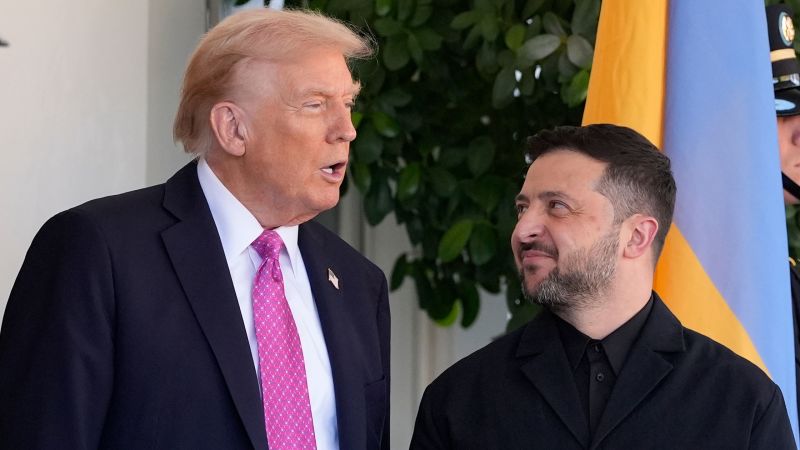The recent meeting between U.S. President Donald Trump and Ukrainian President Volodymyr Zelensky indicates a notable improvement in their diplomatic relationship. However, the primary goal for Kyiv—significant military support and a decisive resolution in the ongoing conflict—remains elusive. Despite the positive developments, the path to achieving a lasting peace is fraught with complexities and challenges.
During their discussions, Trump expressed a willingness to provide Tomahawk missiles to Ukraine, acknowledging their potential as a critical asset in the ongoing conflict. He stated, “Tomahawks are very dangerous… It could mean escalation – a lot of bad things could happen.” This marks a significant shift from earlier positions, as Trump appeared to signal his readiness to supply Ukraine with advanced weaponry to enhance its military capabilities against Russia.
Zelensky, in a press conference following the meeting, emphasized the importance of halting current hostilities. He remarked, “We have to stop where we are. This is important, to stop where we are, and then to speak.” This aligns with Trump’s call for a ceasefire along existing battle lines, suggesting a possible avenue for negotiation that Kyiv could support.
While the prospect of receiving Tomahawk missiles presents a strategic advantage for Ukraine, the logistics and costs associated with such military aid pose significant hurdles. The U.S. lacks the inventory to fulfill Trump’s claim of supplying “thousands” of missiles, and the adaptation process for land-launching these weapons could extend the timeline for their deployment.
Trump’s comments also reflect a shift in his approach toward Vladimir Putin. He acknowledged the possibility of being manipulated by the Russian leader, stating, “I have been played all my life by the best of them, and I came out really well.” This admission may enhance Trump’s ability to navigate future negotiations with Russia.
Current Military Dynamics and Future Implications
The military situation on the ground remains precarious for Ukraine. Although Zelensky’s administration has maintained control over key territories, the ongoing Russian offensive continues to exert pressure. As of October 2023, towns such as Pokrovsk, Kupiansk, and Kostyantynivka remain under Ukrainian control despite significant challenges.
The upcoming winter months could further complicate the conflict. As foliage thins, the tactical advantages of both sides may shift, potentially impacting troop movements and operational strategies. Trump’s assertion that Ukraine produces “very good drones” highlights the evolving nature of warfare, where technological advancements play a critical role.
In spite of these challenges, the dynamics of the conflict may be changing. The Russian military has yet to achieve its strategic objectives, leading to questions about Putin’s long-term plans. As the Kremlin faces mounting pressure to deliver results, it remains uncertain whether Russia can sustain its military efforts through the winter and beyond.
Zelensky has successfully navigated a complex geopolitical landscape, transitioning from relying heavily on U.S. support to actively engaging with European allies for military and financial assistance. This shift underscores the evolving nature of Ukraine’s defense strategy, as the country adapts to changing international relationships.
Looking Ahead: The Path to Peace
The international community remains focused on the potential outcomes of future negotiations, particularly as talks between Trump and Putin are anticipated. The lack of a concrete date for these discussions suggests a continued tactical delay from the Kremlin.
As the situation evolves, the key question for both Ukraine and its allies is how to maintain momentum and support through the winter. The need for effective military strategies and international cooperation is more critical than ever.
With the stakes so high, the coming weeks will be crucial for all parties involved. As the military landscape shifts, both Trump and Zelensky find themselves at a pivotal crossroads, where decisions made now could have lasting implications for regional stability and security.
